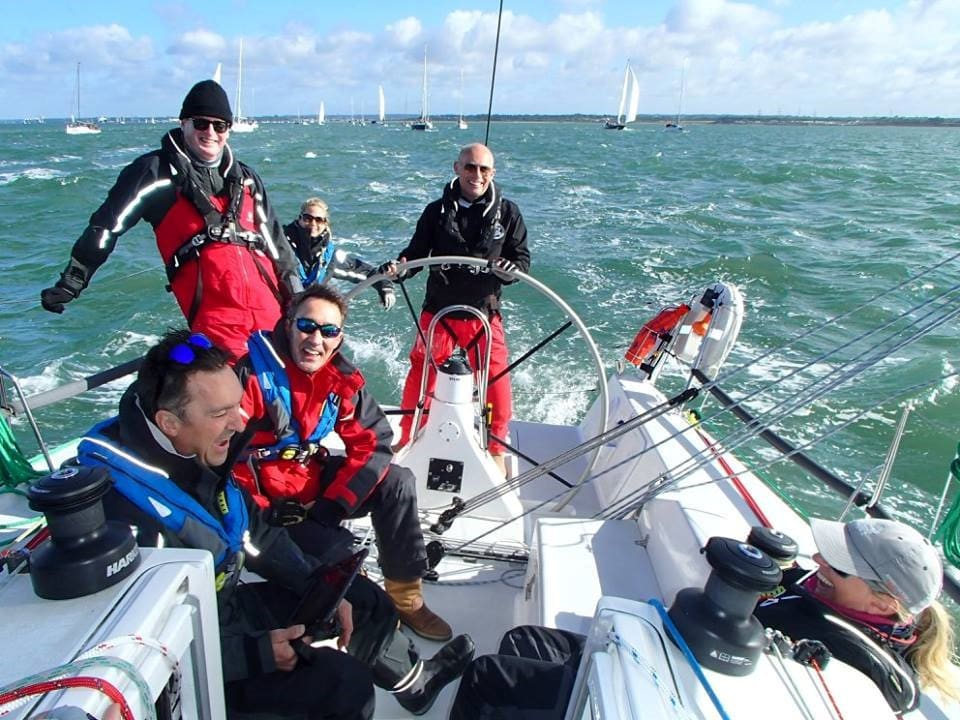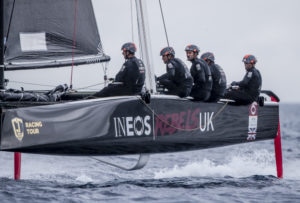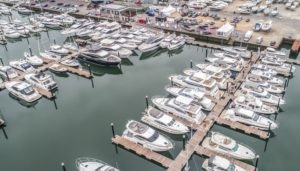AIS aids speedy recovery of man overboard in chilly springtime waters of the Solent

When a guard rail gave way, plunging a 54-year-old sailor into the cold spring waters of the Solent in April, the rapid automatic activation of his Ocean Signal rescueME MOB1 sounded an alarm aboard his boat, alerting fellow crew members, while the display of his position on a chartplotter aided a speedy recovery. Ironically, the crew aboard his boat had been preparing to run a man overboard practise manoeuvre as part of an examination when the accident occurred.
Simon Grier-Jones had been taking part in a two-day RYA Yachtmaster practical test on what he described as a “cold, damp and blowy” day.
He explains: “We were outside of Cowes breakwater, just about to perform a MOB drill as part of the Yachtmaster exam, when I was sent up to take down the jib and, as I was doing so, the guard rail gave way.”
The average water temperature in the Solent at that time of year is 9.8˚C, a temperature which can quickly lead to hypothermia. Grier-Jones described the water as “absolutely freezing”, and adds: “It was very cold and I was very glad to get out.”
Although he was brought back onto the boat in about three minutes by his fellow crew, a call was also put out for the assistance of Cowes RNLI lifeboat crew due to the dangerous currents running by the breakwater and harbour entrance. A rapid launch brought the inshore lifeboat alongside with a doctor, who checked Grier-Jones over and called for an ambulance, concerned about how cold he was and the quantity of water he had ingested, which can lead to secondary drowning. However, once ashore, he was given the all clear and allowed to return to the boat.
Grier-Jones had just bought the Ocean Signal rescueME MOB1, fitted within a Spinlock deckvest lifejacket, in preparation for skippering his own boat, J/111 Snow Leopard (https://www.snowleopardracing.com/), in this year’s Rolex Fastnet Race, one of the most challenging offshore races in Europe. The 2018-19 World Sailing Offshore Special Regulations require every crew member to carry a personal AIS device when taking part in Category 2 yacht races of extended duration.
Grier-Jones explains AIS and the slim size of the Ocean Signal rescueME MOB1 had driven his selection: “I thought the fact Ocean Signal’s rescueME MOB1 has AIS increases the chance you will get picked up by your own boat, which is your most likely means of rescue.”
Speaking about his experience, Grier-Jones says: “I would recommend the Ocean Signal rescueME MOB1 because it worked. And, as a consequence, all of the lifejackets I own are now armed with them.”
He adds: “It was inbuilt into my Spinlock lifejacket, with no bulkiness, and just automatically worked. Even though it wasn’t a life-threatening situation, this incident was a good example of how well it does work.
“It gave me as a skipper more confidence about what would happen if someone went overboard. In an odd way, lots of lessons were learned from it and I now have first-hand experience of the process of picking someone up and getting someone out of the water. I am also very grateful to the crew for their quick actions, the RNLI and medical personnel, so I would like to send my thanks to all involved in my recovery.”
Looking ahead to his participation in this summer’s Rolex Fastnet Race, Grier-Jones noted how much more dangerous a man overboard situation could be at night, miles from shore, particularly in rough weather, and concluded his purchase of the Ocean Signal rescueME MOB1s with AIS for the entire crew would give him “peace of mind” as a skipper.
Ocean Signal provides a free replacement beacon for all owners of its rescueME and SafeSea devices who activate their PLB, MOB or EPIRB in an emergency.
For more information about the rescueME MOB1 and other Ocean Signal products, www.oceansignal.com










